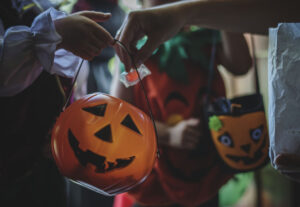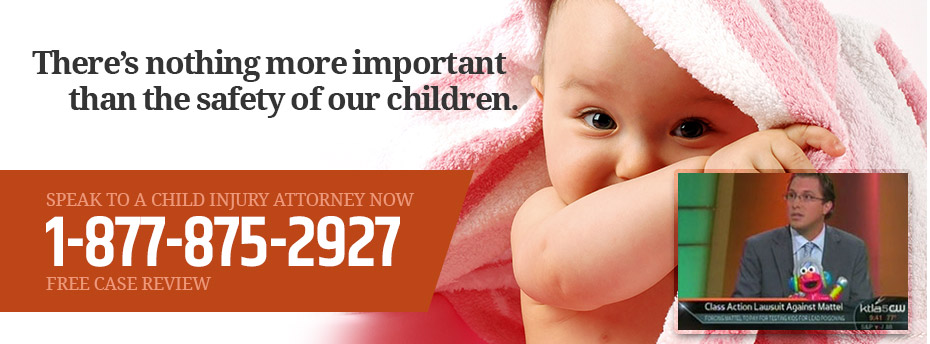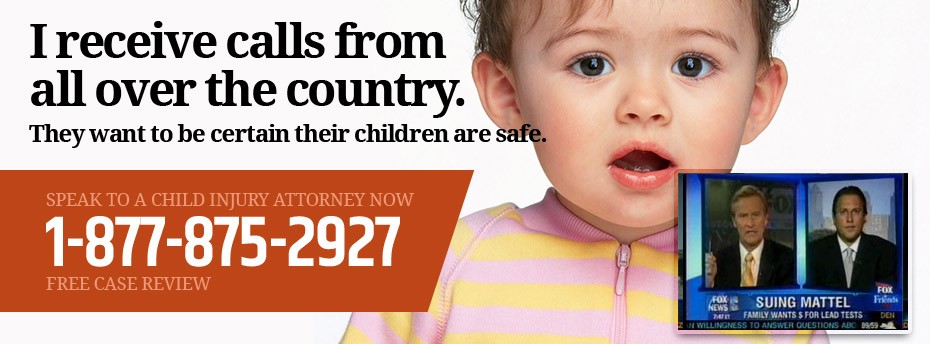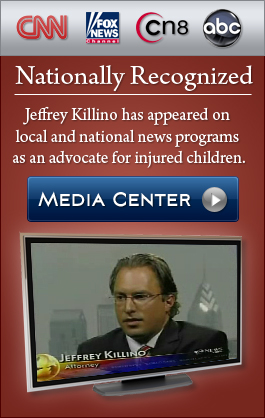Halloween will be a bit different this year, thanks to the ongoing global pandemic.
But with most communities planning to mark the spooky season in some way, millions of kids around the country will soon be donning their costumes and heading out to enjoy parades, parties, and other celebrations that customarily accompany the yearly trick-or-treat tradition.
And while parents need to protect their little ones from COVID-19, the risks more typical of Halloween – flammable costumes, choking hazards, careless drivers, and negligent property owners, just to name a few – haven’t disappeared.
The Killino Firm’s Child Injury Lawyers believe the victims of negligent accidents and defective products are entitled to compensation for their pain and suffering. If your son or daughter was injured or tragically killed because of another’s carelessness on Halloween, call our law firm toll free at 877-875-2927 to speak with a top personal injury attorney and learn more about your legal rights.
Halloween and Pedestrian Accidents
 When most people think of Halloween dangers, contaminated candy is usually the first thing that comes to mind. But in reality, young trick-or-treaters are far more likely to fall victim to a pedestrian accident.
When most people think of Halloween dangers, contaminated candy is usually the first thing that comes to mind. But in reality, young trick-or-treaters are far more likely to fall victim to a pedestrian accident.
According to one recent study, the relative risk of a pedestrian fatality is 43% higher on October 31st, with Halloween night seeing an average of four extra pedestrian deaths compared to other evenings. Not surprisingly, children face the greatest danger, with those aged 4 to 8 years exhibiting a 10-fold increase in pedestrian fatality risk on Halloween.
There are several reasons pedestrian accidents spike on All Hallows’ Eve:
- Far more children on the streets compared to most other evenings.
- Trick-or-treating activities usually begin around dusk.
- Costume masks can restrict a child’s vision.
- Drivers might not see children in dark costumes until it’s too late.
- Their excitement can cause kids to disregard safety rules.
- Adult parties mean more impaired drivers on the road.
Keep Your Kids Safe on the Street this Halloween
Given these factors, it’s not at all surprising that Halloween is consistently one of the top three days for pedestrian injuries and fatalities in the United States. To make sure your son or daughter stays safe, keep these tips in mind:
- Never allow children under 12 to trick-or-treat without adult supervision.
- Older kids should trick-or-treat in a group.
- Avoid dark costumes and place reflective tape on clothing, buckets, and bags to improve visibility.
- Make sure masks don’t restrict vision.
- Carry a flashlight with fresh batteries. But never shine the flashlight directly at oncoming vehicles.
- Stay on sidewalks and avoid walking on the street. If there are no sidewalks, walk on the left side of the road, facing traffic.
- Look both ways and listen for traffic before crossing the street.
- Cross streets only at the corner, and never cross between parked vehicles or mid-block.
Motorists out-and-about on Halloween should also be extra cautious:
- Proceed slowly in residential neighborhoods. Drive at least 5 mph below the posted speed limit to give yourself extra time to react should a child dart into the street.
- Watch for kids walking on roadways, medians, and curbs. Those in dark costumes will be harder to see.
- Remember that excited children won’t always pay attention to traffic and could cross the street mid-block or between parked cars.
- Carefully enter and exit driveways and alleys.
- Turn on headlights to make your vehicle more visible – even in the daylight.
- Broaden your scanning by looking for children left and right into yards and front porches.
- Never use a cell phone or other hand-held device while driving.
- Don’t get behind the wheel if you’ve been drinking or using mind-altering drugs.
Flammable Halloween Costumes
Federal safety standards mandate that textiles with a “flame spread” time less than 3.5 seconds not be used to manufacture clothing, including children’s Halloween costumes. But in 2010, Good Housekeeping Research Institute tested eleven popular children’s Halloween costumes for flammability, using the testing techniques outlined by the U.S. Consumer Product Safety Commission. The results of those tests were alarming.
One — the Sparkle Pixie by Easter Unlimited – failed the test entirely, with flames traveling up the costume’s shimmery fabric in under 3.5 seconds. Two others — Disney Princess by Disguise and Elegant Witch by Rubies — barely passed, with average burn times of just 4.2 and 5.3 second, respectively. That’s still extremely fast, considering many fabrics that meet the federal standard don’t burn at all.
So how can help your son or daughter choose a safe Halloween costume?
- Encourage kids to select costumes and accessories made of solid-colored and/or crushed velvet polyester, which usually only melt when exposed to fire.
- Cotton, linen, jute, and acetate tend to be more flammable than other fabrics. Steer clear of these materials, whether a costume is store-bought or homemade.
- Avoid shimmery fabrics and sparkles. While some of these costumes did pass Good Housekeeping’s tests, it’s impossible to tell by looking which are safe.
- Be wary of costumes with dangling sleeves or large caps, as these features are more likely to come into contact with open flames.
- Keep kids away from open flames and candle-lit jack-o’-lanterns. Use battery-powered LED “candles” instead.
Halloween Slips and Falls
With so many excited kids running from house to house collecting as much candy as they can, spooky decorations might not be the only scary things lurking on your neighbors’ properties.
To prevent Halloween slips and falls, make sure:
- Your child’s costume doesn’t drag on the ground or get caught underfoot.
- Their mask fits securely and isn’t obstructing their view.
- Hats and scarves are secure and won’t slip over your child’s eyes.
- Toy knives, swords, or similar costume accessories are made from soft, flexible materials.
- They avoid walking across the neighbors’ lawns, where decorations, wires, rocks, and other hazards might be difficult to spot in the dark.
- They skip houses that aren’t well lit and always take along a flashlight with fresh batteries.
Ultimately, however, it’s the responsibility of property owners to ensure their premises are safe. If you’re inviting trick-or-treaters onto your property this year:
- Keep the exterior and interior of your home well lit, so trick-or-treaters will know they’re welcome. Turn off outside lights if you don’t plan to be at home or aren’t giving out candy.
- Repair any cracked or broken walkways and stairs. If you can’t do so before the holiday, barricade these areas and mark them as dangerous.
- Remember that October weather can be unpredictable in some parts of the country. Make sure stairs and sidewalks are free of ice and snow.
- Don’t pass power cords and decorations across stairs, driveways, lawns, or sidewalks.
- Keep your dogs and other pets in a safe area where they will be calm and comfortable.
Halloween Candy Safety
For years, the media has sensationalized reports of Halloween candy stuffed with razor blades and laced with poison. But although few of those reports have ever been confirmed, your child’s trick-or-treat haul could hold other dangers.
Choking is the fourth-leading cause of preventable death for children under the age of 5, and more than 12,000 kids are taken to the emergency room every year for food-related choking injuries. Hard candy accounts for roughly 15% of all non-fatal choking incidents involving kids 14-years-old and younger, while other types of candy account for nearly 13%.
To ensure your child’s treats won’t turn tragic:
- Don’t allow your son or daughter to sample their loot until you’ve arrived home and completed a candy check.
- Remove any choking hazards, including hard candy, nuts, raisins, fruit snacks, gum, or anything gooey or sticky like caramel, candy corn, taffy, or marshmallows.
- Remove any small toys (like little balls or marbles) with a diameter less than 1 ¾, as these are also choking hazards.
- Discard any candy with rappers that appear ripped, cut, or tampered with. It’s also a good idea to toss any homemade items if you’re unfamiliar with the giver.
- Don’t allow toddlers and young children to snack on a Halloween treat unsupervised. It’s best to keep their candy out-of-reach and have them ask for it when they want some.
- Never let kids run with food in their mouths.
Contact an Experienced Child Injury Lawyer
As a top child injury attorney, Jeffrey Killino has the resources and knowledge to help injured victims and their families receive the compensation they deserve. If another’s negligence turned your family’s Halloween tragic, please do not hesitate to contact us at 1-877-875- 2927.





